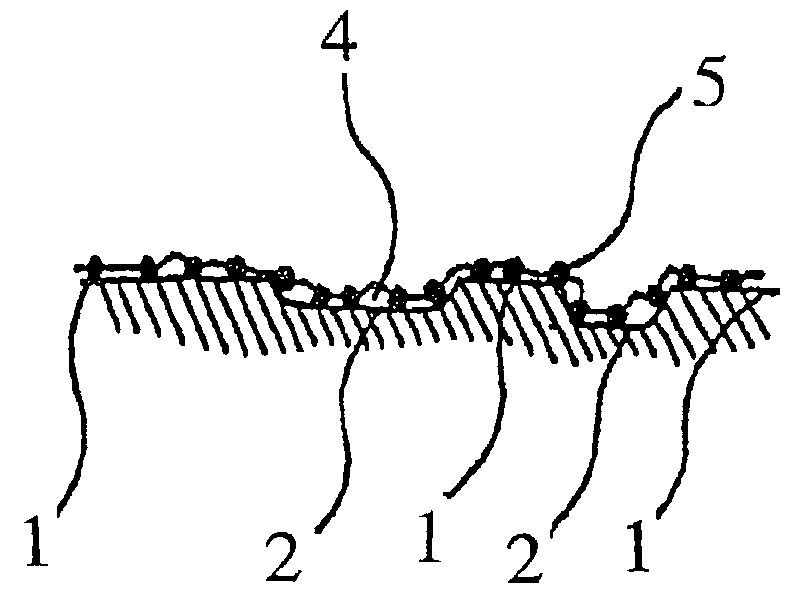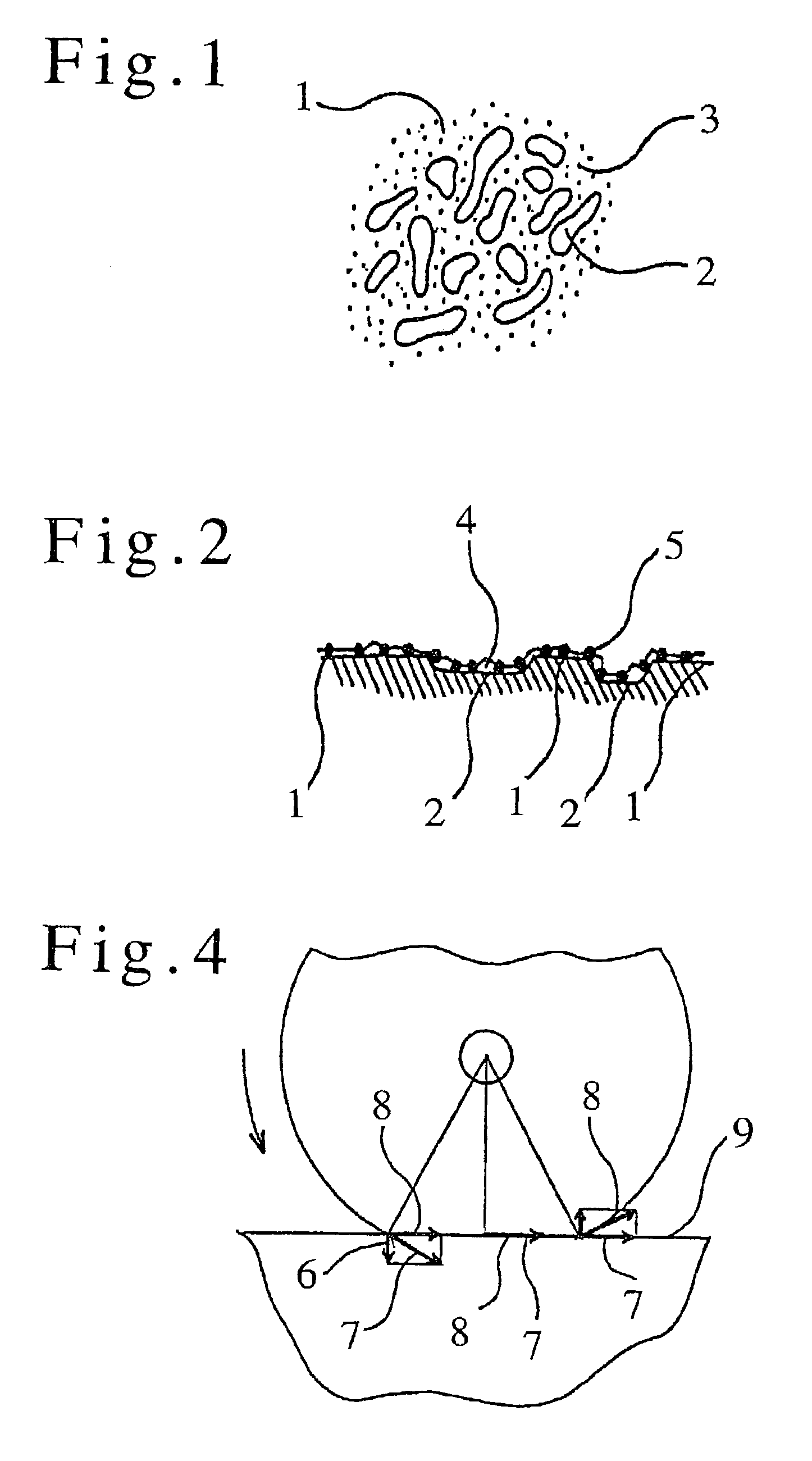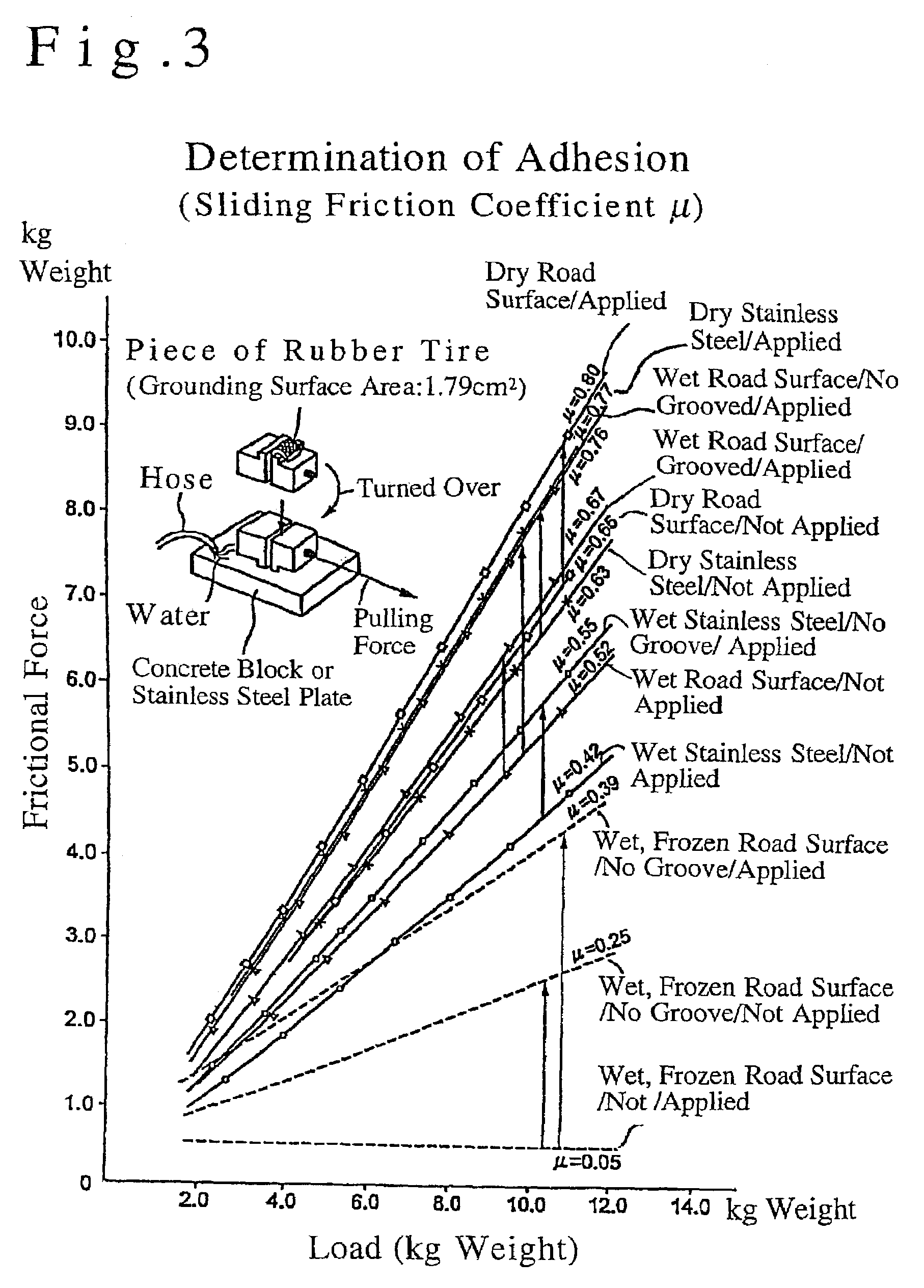Energy consumption efficiency improving agent and method, and article having improved energy consumption efficiency
a technology of energy consumption efficiency and improving agent, which is applied in the direction of non-skid devices, instruments, other chemical processes, etc., can solve the problems of insufficient fuel consumption improvement effect, considerable disbursement, considerable labor, expense, etc., and achieve high energy consumption efficiency and energy consumption efficiency.
- Summary
- Abstract
- Description
- Claims
- Application Information
AI Technical Summary
Benefits of technology
Problems solved by technology
Method used
Image
Examples
example 1
[0046]
Heterofunctional group (amino group, 1 × alkoxy group)1.42%modified silicone oilFine particulate silica (particle diameter: 70 nm)3.77%Denatured alcohol94.81%
[0047]First, the fine particulate silica 5 and the denatured alcohol were mixed with each other at room temperature to form a solution of a very low viscosity. The mixture was left to stand for 10-15 minutes to allow the denatured alcohol to be absorbed by the fine pores of the surface of the fine particulate silica 5, and the heterofunctional group modified silicone oil (viscosity: 8000 cp) 4 was added thereto with stirring. When the mixture solution was left to stand for a long period of time, the fine particulate silica 5 was deposited to effect solid-liquid separation. However, since the particles of the silica 5 were very fine and stirring the solution again soon caused uniform dispersion, the solution was applied to an object in the dispersed state.
[0048]The heterofunctional group modified silicone oil 4 used in the...
example 2
[0063]
Heterofunctional group (amino group, 1 × alkoxy group)1.5%modified silicone oilDenatured alcohol98.5%
[0064]An improving agent (viscosity: 20 cp; film viscosity: 10,000 cp; film thickness: several 10 nm) of the present invention was produced following the same procedure of Example 1 except that the fine particulate silica (particle diameter: 70 nm) was not added. The thus produced improving agent was determined for adhesion (sliding friction coefficient μ) under a load of 2 kg weight by the same procedure as described in FIG. 3. The results of the determination together with the determination results for the improving agent of Example 1 and the determination results obtained under the same test conditions for a case (referred to as “Comparative Example”) where no improving agent was used are shown in TABLE 4 below.
[0065]Further, the improving agent of the present example was evaluated for the film retaining force by the same procedure as that for the determination of adhesion s...
example 3
[0067]
Heterofunctional group (amino group, 1 × alkoxy group)1.42%modified silicone oilFine particulate silica (particle diameter: 300 nm)3.77%Denatured alcohol94.81%
[0068]An improving agent (viscosity: 50 cp; film viscosity: 10,000 cp; film thickness: several 10 nm) of the present invention was produced following the same procedure of Example 1 except that fine particulate silica (particle diameter: 300 nm) was used in the place of the fine particulate silica (particle diameter: 70 nm). The thus produced improving agent was determined for adhesion by the same procedure as Example 2.
[0069]As is seen from TABLES 4 and 5, the improving agent of the present example showed the adhesion which was the same as Example 1 for a dry road surface, was a little smaller than Example 1 for a wet road surface, and was the same as Example 1 for a wet, frozen road surface, and showed the retaining force which was smaller than Example 1 for the antislipping agent and was the same as Example 1 for the ...
PUM
| Property | Measurement | Unit |
|---|---|---|
| particle diameter | aaaaa | aaaaa |
| thickness | aaaaa | aaaaa |
| thickness | aaaaa | aaaaa |
Abstract
Description
Claims
Application Information
 Login to View More
Login to View More - R&D
- Intellectual Property
- Life Sciences
- Materials
- Tech Scout
- Unparalleled Data Quality
- Higher Quality Content
- 60% Fewer Hallucinations
Browse by: Latest US Patents, China's latest patents, Technical Efficacy Thesaurus, Application Domain, Technology Topic, Popular Technical Reports.
© 2025 PatSnap. All rights reserved.Legal|Privacy policy|Modern Slavery Act Transparency Statement|Sitemap|About US| Contact US: help@patsnap.com



